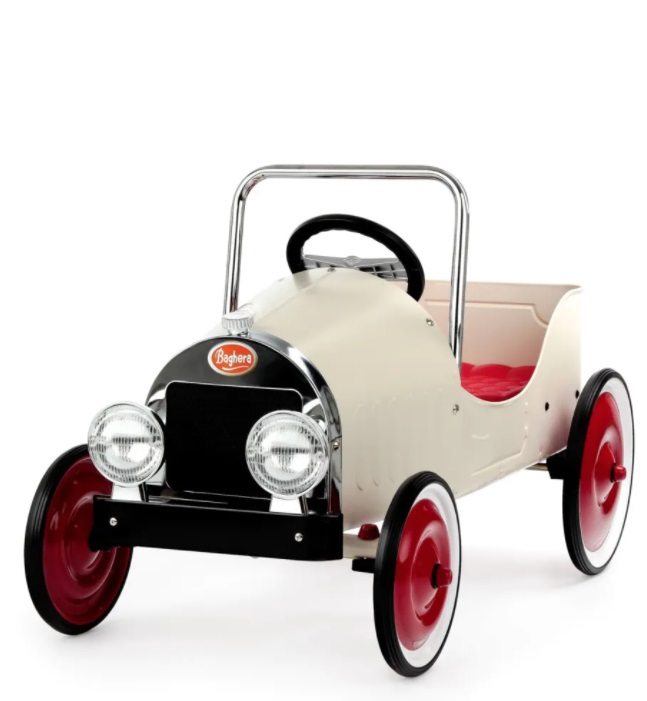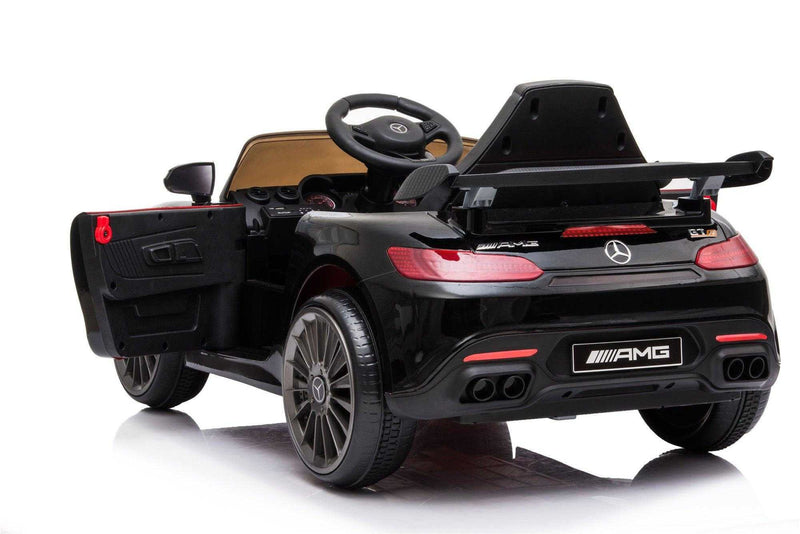Recommended Facts For Picking Ride On Toys
Recommended Facts For Picking Ride On Toys
Blog Article
What Ride-On Safety Features Should I Consider? Pros And Cons
To ensure your child's safety You should think about the following safety features. Seat Belts, for example are a security feature that is important to consider.
Pros - Seatbelts secure your child inside the vehicle that they ride in, decreasing the chances of them falling off or being ejected during play. They offer an extra layer of protection, especially during sudden stops or turns.
Cons - Some ride-on cars might not have seat belts, particularly those designed for younger toddlers. Belts could cause discomfort to youngsters and make them resist wearing them.
Sturdy Construction
Pros- A sturdy ride-on car made of quality materials and durable components is more resistant to abrasion. It ensures long-term safety. It's sturdy and durable enough to stand up to the demands of playtime.
Cons - Construction that is durable tends to be more costly and therefore, isn't affordable for certain families. Additionally, the more heavy materials can affect the ability to maneuver and transferability of the ride on car.
The Low Center of Gravity
Ride-on vehicles with an extremely low center of gravity tend to be less likely than others to tip over, which could lower the risk of accidents and injuries. They are more stable and have better balance. stability, especially when turning or performing maneuvers.
Pros - Ride-ons that have a low-center-of-gravity may sacrifice ground clearance for off-roading capabilities. This may limit the rider's versatility.
Parental Remote Control
Pros: Ride-on vehicles that are remotely controlled allow parents to monitor and supervise their children as playing. This is an added layer of security and protection. Parents can prevent collisions, assist in an emergency situation, or navigate tricky terrain.
Cons – Parental remote control could limit children's independence and autonomy as they heavily rely on the supervision of their parents and help in playing. Additionally, devices which can be operated remotely could cost more than models with manual controls.
Speed Limiters
Pros: Ride-ons that have speed limits or speed settings that can be adjusted let parents determine the maximum vehicle speed to reduce collisions and accidents. The parents can increase the speed of their ride-on vehicle as their child gets more confident and skilled.
Cons - Children can quickly grow out of their lower speed settings. This can cause disappointment or frustration. Additionally, certain models might not have speed limiters or require additional features or accessories.
Safe Start Technology -
Pros: Safe Start Technology ensures the ride-on cars start and stop in a smooth manner. This decreases the danger of sudden jerks that could destabilize or startle the child. It offers a more comfortable and safer riding experience.
Cons - Ride-on cars with safety start technologies may be more expensive than standard models that do not have this feature. Furthermore, children might find the gradual acceleration or deceleration to be less thrilling or exciting as opposed to immediate stops and starts.
Visibility Enhancements
Pros - Ride-on vehicles equipped with visible enhancements like functioning headlights, reflective materials or taillights, increase the visibility of the vehicle. This is especially the case in dark or dimly lit areas or conditions. They improve safety as they make the vehicle visible to pedestrians or other vehicles.
Cons - The increased visibility could lead to the battery draining faster, or add the complexity of the design. This could increase the risk of problems or maintenance.
By considering these safety features, and weighing their pros and cons you can choose an auto ride-on that will prioritize your child's safety while providing an enjoyable and fun play experience. Read the best Lamborghini kids car for blog examples including remote control childrens car, car electric ride on, electric two seater cars, car toy car toy, 2 seater electric cars, toy with car, car on ride, kidscars, toy car, electric two seater cars and more. . 
What Models For Kids Can Be Used Both Indoors And Out?
These models have been designed with particular features and attributes that are specifically tailored to the specific environment and use scenario, indoors or outside. Here are the differentiators between these models Indoor Use Cars
Dimension and weight The majority of indoor cars are smaller and lighter, allowing them to be tucked away in tight spaces like living rooms, bedrooms, and hallways. They can navigate through narrow spaces and tight passageways with ease.
Low Ground Clarity Low Ground Clarity - Indoor vehicles have lower clearances that prevent them from getting stuck, or getting caught, upon obstacles such as carpets, rugs, or thresholds. This allows the car to move easily and uninterrupted across indoor surfaces, with no chance of getting stuck or falling over.
Smooth Wheels The wheels of indoor vehicles are typically constructed from smooth materials such as plastic or rubber. This provides stability and grip on smooth surfaces such as flooring made of hardwood laminate floors, tiles. These wheels are designed for indoor use, to reduce noise and to protect surfaces from scratching.
Limited Speed - Cars used for indoor use usually have smaller maximum speeds to guarantee controlled and safe operation within restricted areas. This helps prevent collisions and accidents with furniture like walls or obstacles found inside.
Outdoor Use Cars -
Built to Last - Vehicles made for outdoor use are built with durable materials such as tough plastic or metal to withstand rough handling and outdoor elements like sunlight, humidity and temperature variations. They are designed to withstand the harsh environment of outdoor use.
High Ground Clearance Outdoor-use vehicles have higher ground clearance in order to deal with bumps and uneven terrain encountered outside. This enables them to navigate rough surfaces such as dirt, grass, or gravel without becoming trapped or damaged.
Traction Tires These are the tires on vehicles that are designed for outdoor use typically have treads or patterns that increase traction and grip when driving on slippery or uneven surfaces. This aids in maintaining control and stability when driving on rough terrain.
Weather Resistance - Designed for outdoor use, cars can have components that are impervious to moisture or environmental damage, such as waterproof casings and sealed electronics. They can withstand the elements of rain, mud and even puddles with no sacrifice in performance.
Higher Speeds - Cars for outdoor use usually feature more top speeds to make room for large spaces as well as the long distances outdoors. Children can experience a more adventurous and thrilling riding experience.
These features and traits will assist parents in choosing the ideal car for their kids to suit their usage requirements and the surrounding. Take a look at the best click here about Mercedes kids car for blog advice including toy car, ride electric car, race car toy, toy car, two seater childrens electric cars, electric rideons, a toy car, electric ride along car, a toy car, childs electric ride on car and more. . 
What Kind Of Children's Remote-Controlled Cars Are There? What Are The Advantages And Disadvantages Of These Cars?
Remote control cars for children, also called RC or remote-controlled cars, are available in a variety of styles, sizes and costs. They're designed to fit various budgets and tastes. This article will give you an overview of types sizes, styles and prices of children's remote control cars, along with their pros and cons.
Electric RC Cars – These are battery-powered, remote-controlled vehicles that can be used both indoors and out. They come in a variety of styles like buggies, trucks and sports cars.
Nitro RC Cars : Gas-powered cars that are operated remotely and have better performance, but require more maintenance. They tend to be larger and more expensive than electric RC cars.
Scale models are a replica of real life vehicles including cars and trucks. They are also operated remotely. Scale models vary from 1-10 to 1-24, with larger scales allowing for more details.
Sizes -
Children's remote-controlled cars come in a variety of sizes. The range of sizes ranges from tiny replicas to large-scale models. Size can affect the efficiency of a car as well as its speed and its handling characteristics.
Micro-sized automobiles are compact and light. They are ideal for indoor use with younger children. Models with larger scales offer more power and durability and are therefore perfect for off-road and outdoor racing.
Prices
The prices of remote-controlled vehicles for children differ based on factors such as the size, features and model.
The cost of smaller electric RC vehicles range between $20 and $100. However the larger-scale electric and Nitro RC models are available between $100 and $500.
Scale models and high-end hobby-grade RC cars can cost several hundred dollars to more than a thousand dollars, depending on the degree of performance and detail.
The pros and cons of -
Pros -
Remote Control Cars for Children These cars are perfect to entertain your children. They can be utilized by adults and children alike.
Skills Development. The operation of a RC vehicle allows children to develop hand-eye-coordination as well as spatial awareness and problem-solving abilities.
Social interaction. You can take pleasure in the RC cars with your friends and family that encourage social interaction.
Aftermarket parts including upgrades, accessories, and other aftermarket items can be used to customize many RC cars and increase their performance.
Cons -
Costs - Remote controlled cars for children, especially models with premium features as well as hobby-grade models can be quite expensive.
Children might find it difficult to control the RC cars for the first time.
Maintenance – RC vehicles need regular maintenance. This includes cleaning, lubrication as also periodic repairs and replacements of parts.
Safety Concerns – RC car safety can be compromised by collisions, electrical hazards, and other dangers in the event that the vehicles aren't used with caution and supervision by an adult.
The best remote control children vehicles are ones that provide an educational and fun experience for children of all age groups. When selecting the best model for your child however, you must consider several factors, including size, price features, and security. Hobby-grade RC vehicles are suitable for older kids and those who are avid, while less complex models are ideal for younger children and beginners. Follow the best electric kids cars kidscars.co.uk advice for website recommendations including electric toy car, ride electric car, toy cars toy car, toy a car, digger ride, electric ride along car, electric ride on, car on ride, kiddies cars, toy cars and more. .